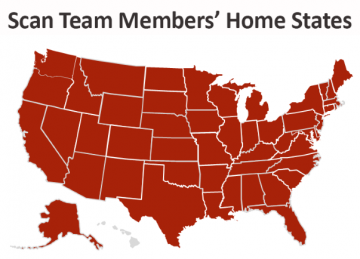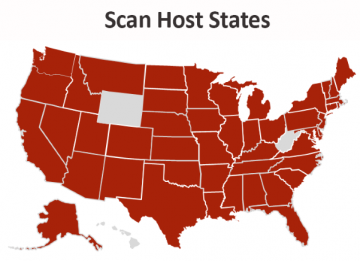
The NCHRP U.S. Domestic Scan Program was developed by the American Association of State Highway and Transportation Officials (AASHTO) and is administered through the National Cooperative Highway Research Program (NCHRP) using consultant contracts to manage the scans identified by the NCHRP Project 20-68A panel.
The Domestic Scan Program recognizes the value of firsthand sharing of new technologies and practices. Launched in 2006, the program sponsors up to five scans per year, putting state and federal DOT practitioners who need solutions in touch with innovative peers around the country, speeding the transfer of technology and know-how.
During the intense experience of the scan (typically one to two weeks), participants see firsthand how a new technology or practice works in the real world. They also develop close professional relationships that remain readily available to them even years later.
Creating Effective Scans. Effective scans both supplement and make use of other mechanisms for information exchange such as publications in trade and professional journals, conferences and peer-to-peer forums. A scan focuses on face-to-face discussion of current experience, providing opportunities for a uniquely rich exchange of information that is difficult or impossible to replicate through written materials, telephone conversations or email correspondence. The informal discussions among the group of visitors participating in the scan contribute to the extraction of useful information from the individual members’ observations.

Scan Topics. The scan topics are selected by the NCHRP 20-68A oversight panel from those suggested via a formal solicitation process. Thirty-one scans have been completed twelve more are in various stages of progress. Details on individual planned, ongoing and completed scans can be accessed through the Scan Studies page.
Scan Process. A scan entails four key steps. First, knowledgeable people identify novel and promising practices in their field of interest. Second, these people assess the likelihood that these new ideas might beneficially be applied in other settings. Third, new practices that offer the most promise are selected and field visits are made to observe the practices, identify pertinent development and application issues, and assess appropriate technology transfer opportunities and methods. Finally, the results of the initial steps are documented for use by those who participated and for others to apply.
About this Website
This website is a project of NCHRP 20-68A – U.S. Domestic Scan Program. Scan participants and others are encouraged to post descriptions of beneficial changes in practice at state DOTs as a result of a Domestic Scan Program tour or follow-up dissemination of findings. Any opinions, findings, or conclusions expressed on this website are those of the authors and do not necessarily reflect the views of the Transportation Research Board or the National Academies.
This website serves three main purposes:
- Provides information about the Domestic Scan Program (NCHRP Project 20-68A) and individual scans, including final reports, team members and sites visited.
- Describes research to measure and trace scan impacts (NCHRP Project 20-68B).
- Encourages scan team participants to record follow up implementation and dissemination activities.
Fact Sheet
- A one-page Program Fact Sheet outlines the Domestic Scan Program, tells why scans are effective, and explains how to propose scan topics.
Additional Resources
- The overview page for NCHRP Project 20-68A – U.S. Domestic Scan Program is available on NCHRP’s website.
- The Prospectus & Status of Programmed Scans [PDF] was updated April 2021.
Submitting a Scan Proposal
- AASHTO member agencies are encouraged to submit a proposal for a future scan.
- Read the Domestic Scan project panel’s guidance on What Makes a Good Scan Topic Proposal.
In the News
- The program was featured in the January-February 2012 issue of TR News.
- An NCHRP Impacts on Practices brief, Peers share know-how to speed innovation [PDF], outlines the program and discusses success stories.